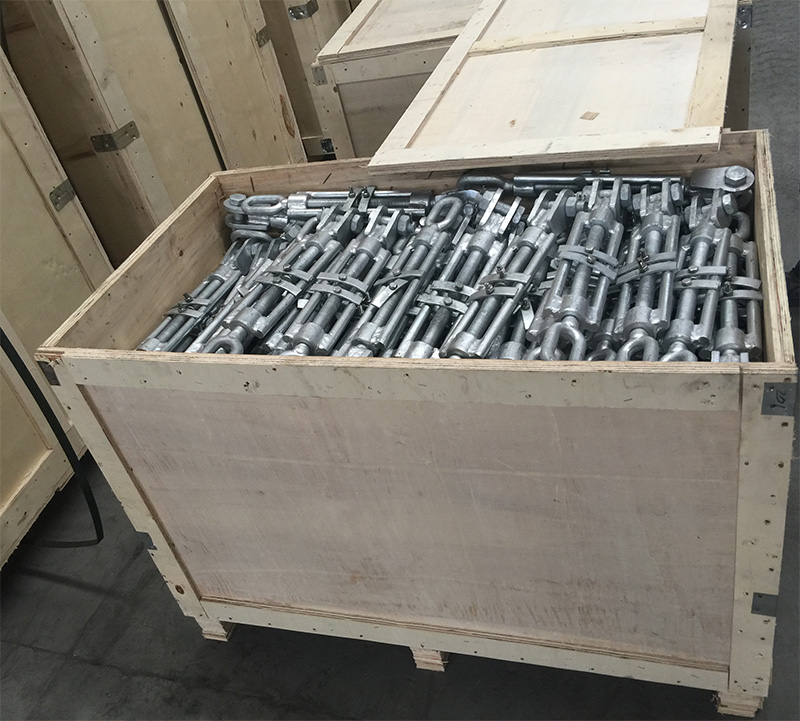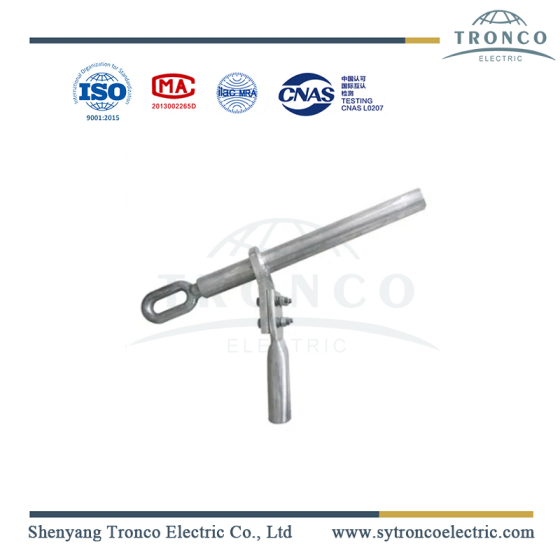
- Home
- >
- Products
- >
- TURNBUCKLE
- >
TURNBUCKLE
- Information
- Product Description
What Are Turnbuckles?
Turnbuckles are the hardware fittings used for the fitting strings in transmission, distribution lines, and substations. The threaded bolts are commonly used to adjust the length of insulator strings.
The Components of a Turnbuckle
A typical turnbuckle consists of three main parts:
Rectangular Body: This body has holes on each end, with one side containing right hand internal threads and the other side containing left hand internal threads. The length of the body can adjust the length of fitting strings, which is much more competitive than adding more fittings to meet the string length.
Two Threaded Inserts: These are the end fittings that have various designs such as hooks, clevis jaws, or eyes on the non-threaded side. The hook end fitting is self-explanatory, while the eye end fitting is a closed hook. The jaw end fitting has an opening that is secured by a bolt, nut, and/or pin system. The size of the threaded inserts is determined by the thread diameter, which indicates the load-bearing capacity of the inserts.

Choosing the Right Material
The usage of turnbuckles determines the material selection, as they need to withstand high forces without breaking. Two common materials used for turnbuckles are:
Hot Dip Galvanized Steel: Galvanized steel turnbuckles are more affordable but offer less corrosion resistance compared to stainless steel. While they can be used outdoors, they are not as durable in corrosive environments.
Stainless Steel: Stainless steel turnbuckles are highly resistant to rust and corrosion, making them ideal for outdoor applications, high moisture, high chloride, and saltwater environments. For demanding marine and coastal conditions, it is recommended to use high-quality 316 grade stainless steel for prolonged and safe use.
How Do Turnbuckles Work?
The opposing threads on the body of the turnbuckle cause the inserts to move in opposite directions.
Here's how they work:
When the end fittings are screwed in and the body is rotated in one direction, the inserts are pushed out of the body, thereby extending the length and relieving tension on the attached rope or cable section.
If the body is turned in the opposite direction, the inserts are pulled towards the center, retracting the length and increasing tension.
The tension applied is determined by the distance between the two nuts when they are attached (closed), as well as the material composition of the turnbuckle.
Strength: 120kN.
End fittings can be eye & eye, jaw & jaw, eye & fork, and so on.
Standard: IEC61284, BS729, ISO1461, ASTM A153.
Ajustable turnbuckle.












